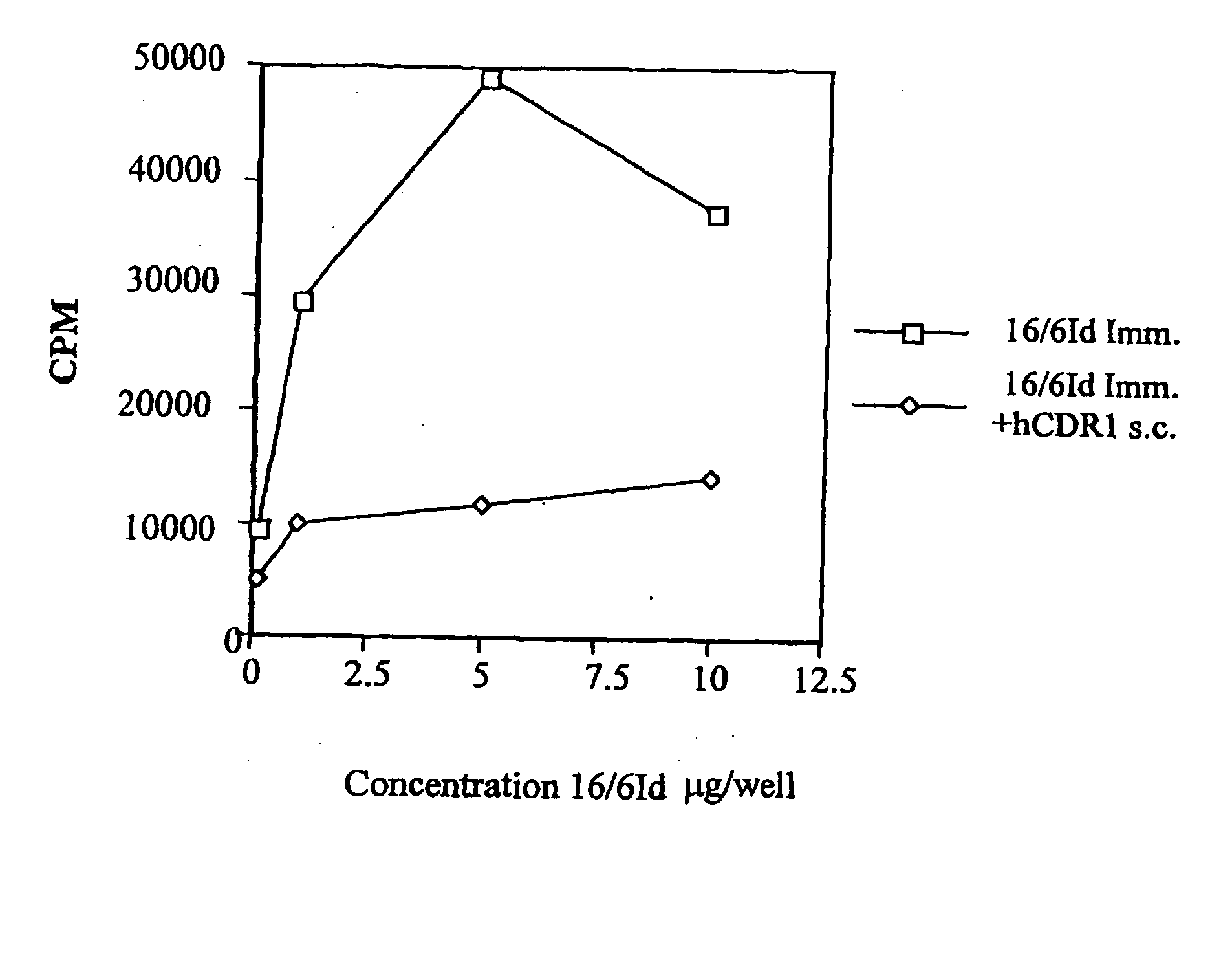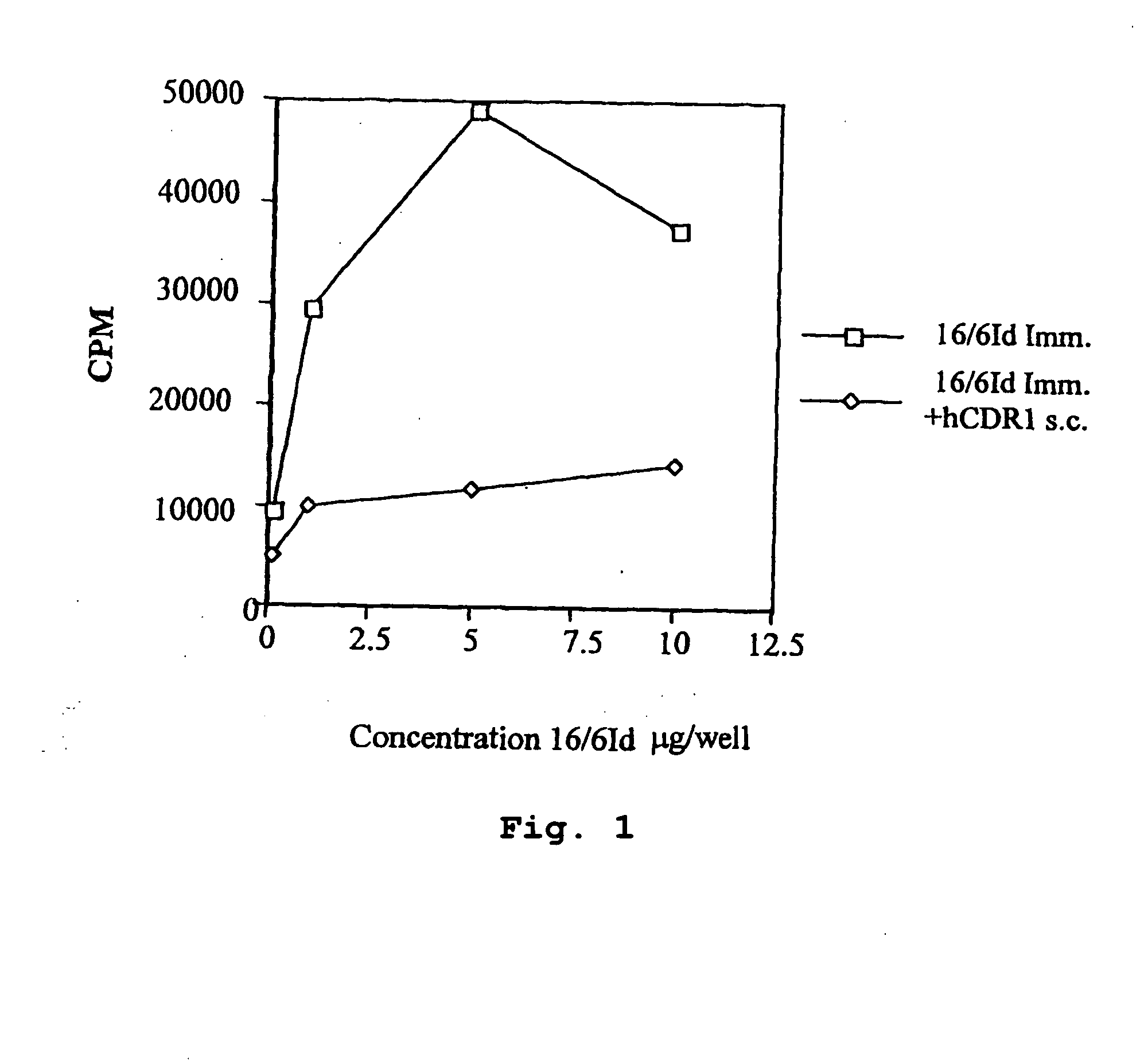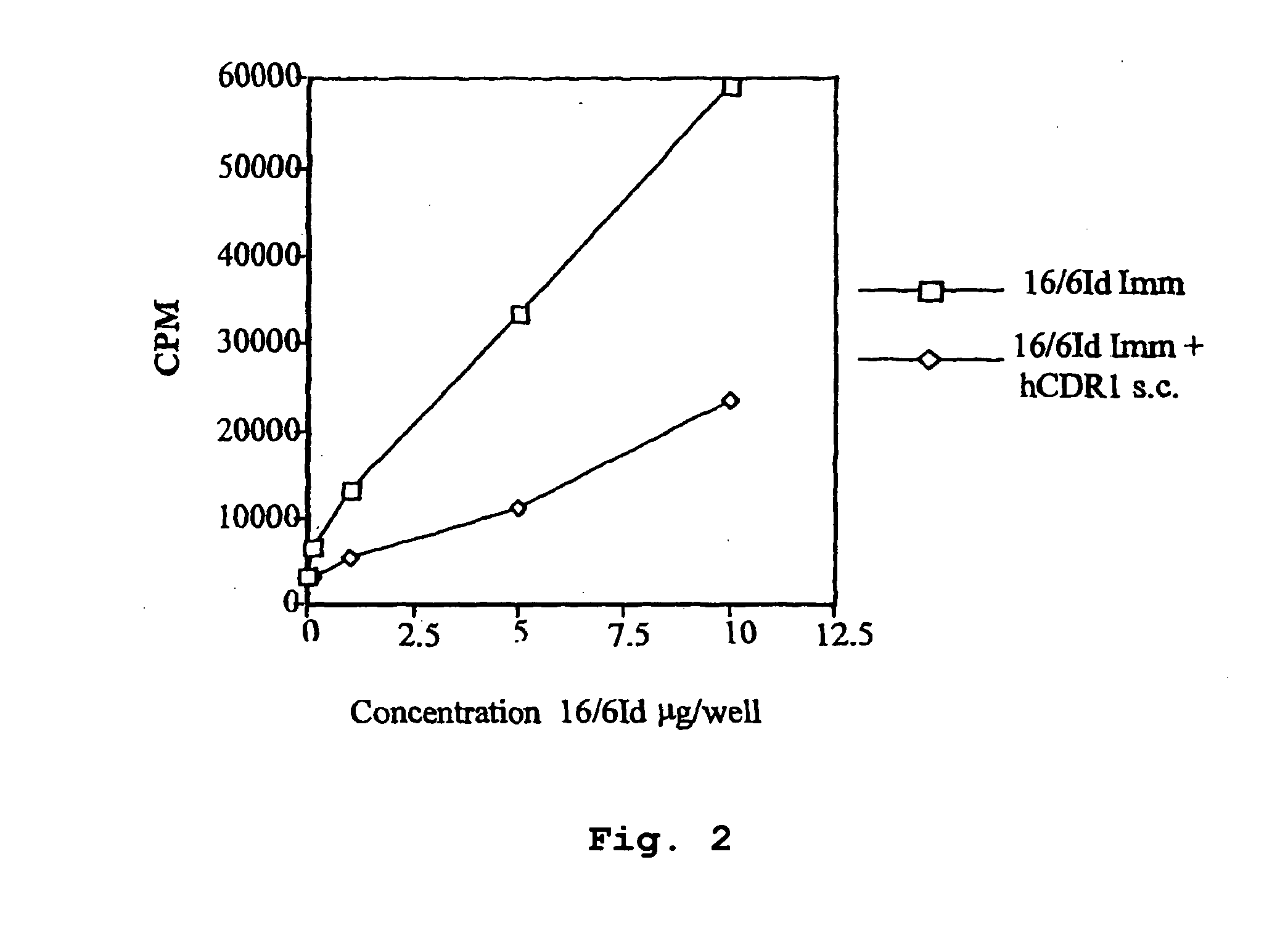Synthetic human peptides and pharmaceutical compositions comprising them for the treatment of systemic lupus erythematosus
a technology of human peptides and pharmaceutical compositions, applied in the field of synthetic peptides, can solve the problems of not having a specific treatment aimed at the prevention or cure of sle, and achieve the effect of increasing the level of tgf-
- Summary
- Abstract
- Description
- Claims
- Application Information
AI Technical Summary
Benefits of technology
Problems solved by technology
Method used
Image
Examples
example 1
Synthesis of the Human Peptides hCDR1 and hCDR3
[0127]The human hCDR1 (SEQ ID NO:1) and hCDR3 (SEQ ID NO:3) peptides were prepared by methods well-known in the art, for example, by chemical solid phase or solution phase synthesis using an automated synthesizer by using the manufacturer's protocols for t-butyloxycarbonyl (t-Boc), fluorenylmethoxycarbonyl (Fmoc) or other alpha-amino acid protecting group procedure essentially as described (see, for example, Peptides: Synthesis, Structure and Applications, ed. by B. Gutte, Academic Press, 1995; Peptide Synthesis Protocols, ed. by M. Pennington and B. Dunn, Humana Press, 1994; Schnolzer M. et al., In situ neutralization in Boc-chemistry solid phase peptide synthesis. Rapid, high yield assembly of difficult sequences. Int. J. Pept. Protein Res. 40: 180-193, 1992).
example 2
In Vivo Inhibition of Lymph Node Cell (LNC) Proliferation of Mice Immunized with mCDR1 and mCDR3 and Treated with hCDR1 and hCDR3
[0128]In order to determine the inhibitory efficacy of the human peptides hCDR1 and hCDR3, we first tested their ability to inhibit the in vivo priming of mice with the murine peptides mCDR1 and mCDR3.
[0129]To this end, BALB / c and SJL mice were immunized with mCDR1 and mCDR3, respectively. The immunizing murine peptides were injected (10 μg / mouse) in CFA intradermally in the hind footpads. Concomitant with the immunization, groups of BALB / c mice were injected subcutaneously (s.c.) with 200 μg in PBS of hCDR1 and groups of SJL mice were similarly injected with hCDR3. Ten days after the immunization, mice were sacrificed and their lymph nodes were harvested and the cells were tested for their ability to proliferate following triggering with the immunizing peptides. Briefly, LNCs of immunized mice (0.5×106 / well) were cultured (in triplicates) in the presence ...
example 3
[0131]In Vivo Inhibition of LNC Proliferation of Mice Immunized with the Human Anti-DNA 16 / 6Id mAB and Treated with hCDR1 and hCDR3
[0132]Because our aim was to test the inhibitory capacity of the peptides based on the CDR of the human 16 / 6Id autoantibody, it was of importance to find out whether peptides hCDR1 and hCDR3 are capable of inhibiting the priming to the whole molecule of the human 16 / 6Id mAb. To this end, BALB / c and SJL mice were primed with the human 16 / 6Id mAb (2 μg / mouse) in CFA intradermally in the hind footpads. The priming was done concomitant with the s.c. administration in PBS of 200 μg / mouse of hCDR1 to groups of BALB / c mice and of hCDR3 to SJL mice. Ten days following immunization, the mice were sacrificed and their LNCs were tested in vitro for their ability to proliferate to different concentrations (0.1-10 μg / well) of the human anti-DNA 16 / 6Id mAb.
[0133]Representative results of these experiments are shown in Tables 2A and 2B. The results are presented as max...
PUM
| Property | Measurement | Unit |
|---|---|---|
| Mass | aaaaa | aaaaa |
| Mass | aaaaa | aaaaa |
| Mass | aaaaa | aaaaa |
Abstract
Description
Claims
Application Information
 Login to View More
Login to View More - R&D
- Intellectual Property
- Life Sciences
- Materials
- Tech Scout
- Unparalleled Data Quality
- Higher Quality Content
- 60% Fewer Hallucinations
Browse by: Latest US Patents, China's latest patents, Technical Efficacy Thesaurus, Application Domain, Technology Topic, Popular Technical Reports.
© 2025 PatSnap. All rights reserved.Legal|Privacy policy|Modern Slavery Act Transparency Statement|Sitemap|About US| Contact US: help@patsnap.com



